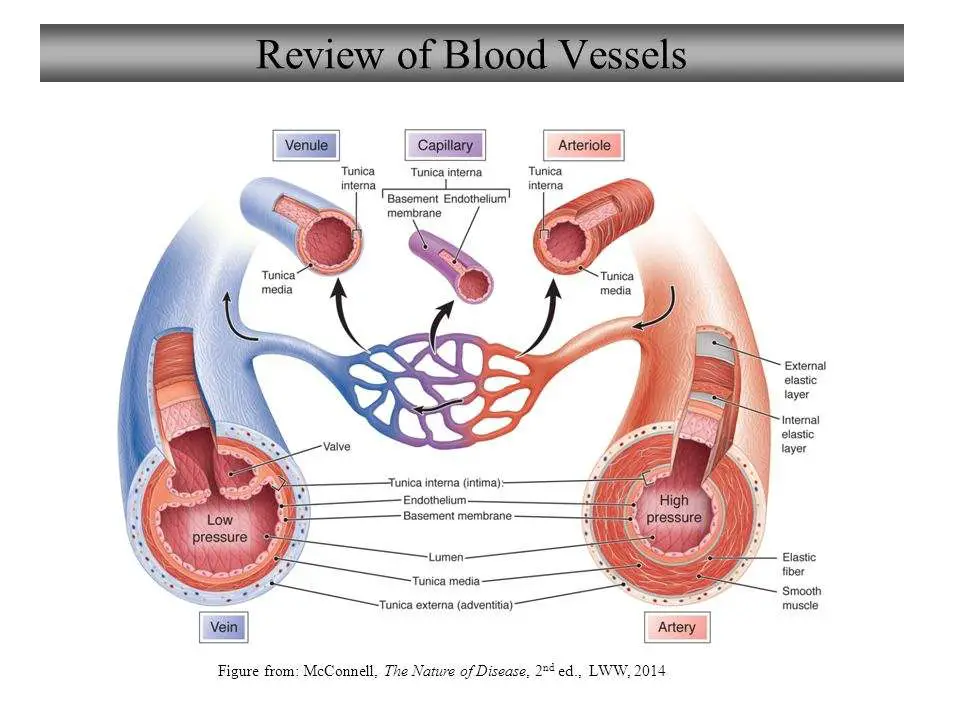Blood Vessels Labeled Heart. Coronary arteries are named as such due to the way they encircle the heart, much like a crown. Arterioles connect with even smaller blood vessels called capillaries. The valves incorporate two or three leaflets (cusps) around the atrioventricular orifices and the roots of great. Through the thin walls of the capillaries, oxygen and nutrients pass from blood into tissues, and waste products. Capillaries surround body cells and tissues to deliver and absorb oxygen, nutrients, and other substances.
Heart blood flow system with blood vessel scheme. Blood vessels flow blood throughout the body. Free online quiz label the heart and blood vessels! Blood vessels are intricate networks of hollow tubes that transport blood throughout the entire body so that it can deliver valuable nutrients to and remove waste from cells. The heart, one of the most significant organs in the human body, is nothing but a muscular pump which pumps blood throughout the body. They also take waste and carbon dioxide away from the tissues. The valves incorporate two or three leaflets (cusps) around the atrioventricular orifices and the roots of great. National institute of diabetes and digestive and kidney diseases, national institutes of health.

Coronary vessels anatomical health care vector illustration labeled diagram.
They are vital for carrying nutrients, oxygen and waste around the body. Great vessels of the heart. • identification of blood vessels as arteries, capillaries or veins from the structure of their walls. Where venules are smaller versions of veins. Capillaries surround body cells and tissues to deliver and absorb oxygen, nutrients, and other substances. Carry blood away from the heart (always oxygenated apart from the pulmonary artery which goes from the heart to the lungs). Your heart never stops beating because it is pumping blood around your body day and night. National institute of diabetes and digestive and kidney diseases, national institutes of health. They also take waste and carbon dioxide away from the tissues. Blood flows out of the heart, first through the aorta, then through arteries, which branch out and get smaller and smaller as they go into the tissues. Heart blood flow system with blood vessel scheme. The coronary circulation refers to the vessels that supply and drain the heart. Blood travels from the heart in arteries, which branch into smaller and smaller vessels, eventually becoming arterioles.
The blood vessels of the body form a circle that begins and ends at the heart. Download media please credit each image as: Blood vessels are referred to collectively as the vascular system and, together with the heart, make up the circulatory system or cardiovascular system. Coronary arteries are named as such due to the way they encircle the heart, much like a crown. This is an online quiz called label the heart and blood vessels!

There is a printable worksheet available for download here so you can take the quiz with pen and paper.
Veins are blood vessels that return blood back to the heart; 11 видео250 просмотровобновлен 31 мар. Blood vessels are referred to collectively as the vascular system and, together with the heart, make up the circulatory system or cardiovascular system. Identifying, treating and managing cardiovascular conditions, disorders and emergencies. Carry blood away from the heart (always oxygenated apart from the pulmonary artery which goes from the heart to the lungs). The heart is a muscular organ that pumps blood through the blood vessels of the circulatory system. The heart, one of the most significant organs in the human body, is nothing but a muscular pump which pumps blood throughout the body. Capillaries surround body cells and tissues to deliver and absorb oxygen, nutrients, and other substances. Blood flow through the heart. Blood vessels flow blood throughout the body. In this activity, students use online and paper resources to identify and label the main parts of. Great vessels of the heart. The human blood vessels labeled. The capillaries also connect the branches of arteries and to. Then, the vessels begin to collect together into larger and larger veins, which return blood to the heart.
Blood flows out of the heart, first through the aorta, then through arteries, which branch out and get smaller and smaller as they go into the tissues. The difference in the structural characteristics of arteries, capillaries and veins is attributable to their respective functions. Free online quiz label the heart and blood vessels! Capillaries are blood vessels that are one cell thick (endothelium) where the main diffusion and exchange takes place. Heart, blood vessels and blooddraft. Blood vessels flow blood throughout the body.

Your heart never stops beating because it is pumping blood around your body day and night.
Most of the other waste products are disposed of by the kidneys. Then, the vessels begin to collect together into larger and larger veins, which return blood to the heart. Capillaries surround body cells and tissues to deliver and absorb oxygen, nutrients, and other substances. This is very important, because your blood carries oxygen to all the organs and tissues of your body. Heart blood flow system with blood vessel scheme. The capillaries also connect the branches of arteries and to. The coronary circulation refers to the vessels that supply and drain the heart. Blood vessels are intricate networks of hollow tubes that transport blood throughout the entire body so that it can deliver valuable nutrients to and remove waste from cells. Blood transports oxygen and nutrients to the body. Torso with the heart and blood vessels labeled. They also take waste and carbon dioxide away from the tissues. Coronary vessels anatomical health care vector illustration labeled diagram. Which blood vessels carry blood to the heart? Blood vessels flow blood throughout the body. Free online quiz label the heart and blood vessels!
The blood vessels of the body form a circle that begins and ends at the heart blood vessels labeled. The valves incorporate two or three leaflets (cusps) around the atrioventricular orifices and the roots of great.
Posting Komentar untuk "Blood Vessels Labeled Heart"